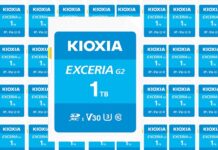Las Vegas “NetApp will be integrating QLC enterprise NVMe SSDs across their product portfolio through 2020.”
So says Wells Fargo senior analyst Aaron Rakers, fresh from attending an analyst meeting this week at NetApp Insight in Las Vegas. He is referring to NetApp’s all-flash portfolio – mostly ONTAP and E-Series arrays.
Rakers thinks the switch to QLC flash could have a detrimental effect on Seagate.

QLC (4bits/cell) flash is denser than the current TLC (3bits/cell) and is both slower and has a shorter working life (endurance.) But it is still many times faster than disk drives at data access speed and a combination of over-provisioning and write management can extend endurance to an acceptable level.
Rakers suggests that wide QLC SSD adoption could affect shipments of 10K rpm disk drives. In a note to subscribers, he wrote NeApp “believes this could be a notable inflection point in the adoption of all-flash – believing that this will cannibalize the 10K RPM mission-critical HDDs.”
He cited estimates by TrendFocus, a market research firm, that 3.5 million such HDDs shipped in Q2 2019 – and Seagate shipped 60-65 per cent of them. That means 2.2 million drives at the mid-point. Western Digital is estimated to have less than one per cent shipment share.
As an indication of QLC SSD cost versus TLC SD cost, Pure Storage is using QLC flash in its FlashArray//C array, which is priced at a 40 per cent discount to its FlashArray//X mainstream array.
Micron, which makes QLC flash, is another believer in the idea that QLC flash will cannibalise disk drive sales.







